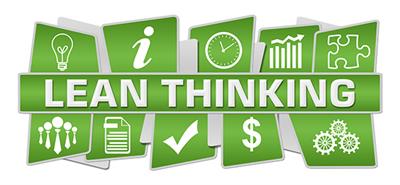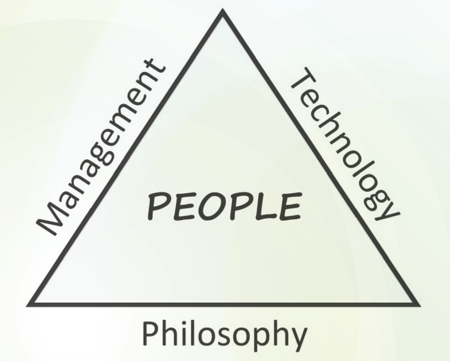 In my experience, the key to a successful lean implementation is the total commitment of everyone involved to make it work. All levels of the organization — from operators to senior managers — must be aware of the fundamentals of lean and make their best efforts to practice and improve them daily.
In my experience, the key to a successful lean implementation is the total commitment of everyone involved to make it work. All levels of the organization — from operators to senior managers — must be aware of the fundamentals of lean and make their best efforts to practice and improve them daily.
The Other Customer
One of lean’s basic elements that management must be fully committed to is the “customer-first” philosophy. Most printing companies are dedicated to satisfying their external customers, but lean organizations also take a process view. Essentially, each succeeding process, function or department is the internal customer. The people in lean companies work hard to ensure that all team members and all departments realize their dual role: They are the customers of the previous operation and the supplier to the next operation downstream. For this concept to thrive, there must be no artificial barriers between areas or departments. The entire organization shares problems and must work together to ensure a solution is found.
Lean is an integrated and interdependent system involving many elements. You can think of it as a triangle, where the three sides represent philosophy, technology and management. Cradled in the middle of the triangle is what lean and continuous improvement is all about — people. Personal development is at the core of lean and continuous improvement. Unfortunately, this is frequently overlooked as management is drawn to the tools and technical elements such as kanban, just-in-time, visual control and 5S.
 Foundational Support
Foundational Support
Of course, these tools are important to manage and improve the day-to-day production system as efficiently as possible. But the basic tenet of lean manufacturing is that people are the most important asset, which is why management must have a shop floor focus. Managers must understand that all value-added activities start on the shop floor and their job is to support the team members. Production staff appreciate management on the shop floor only when they can see that they are out there to help them do their jobs, rather than as part of the command structure telling them what to do.
Lean is not simply a set of concepts, techniques and methods that can be implemented by command and control. It is a fully integrated management and manufacturing philosophy that must be practiced throughout the organization from top to bottom and consistently applied and improved day after day.
The human dimension is the single most important element for success. Of all the resources that exist inside a printing company, people are the only asset that appreciates. Management’s most critical role is coaching and helping large numbers of people work together to achieve a common goal. This includes defining and explaining what that goal is, sharing a path to achieving it, helping people to take the journey with you and assisting by removing obstacles. Striving to achieve a lean and continuous improvement initiative without respect for people is like trying to walk with only one leg.
Are you getting maximum value from your people?
Read the full article on SGIA.org, and learn more about lean thinking at the upcoming Continuous Improvement Conference (April 14 - 17, Dallas).